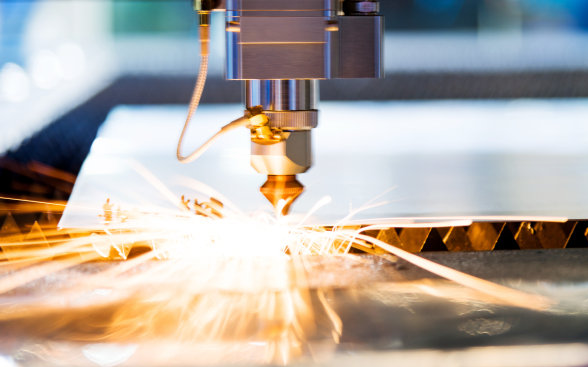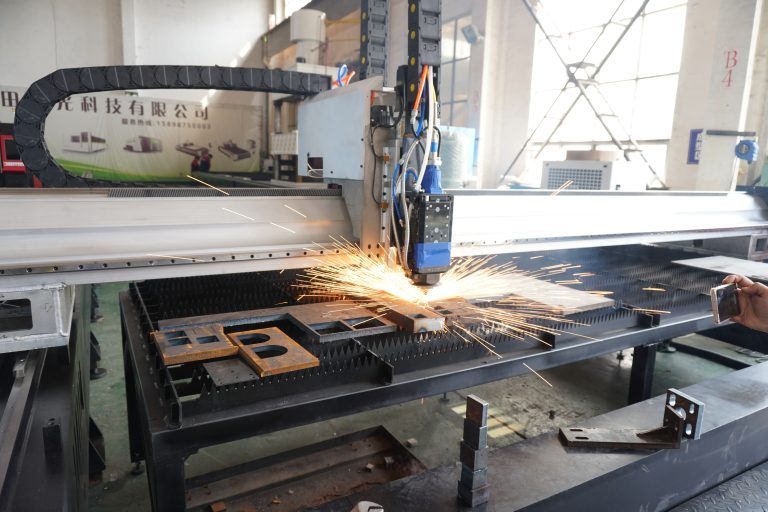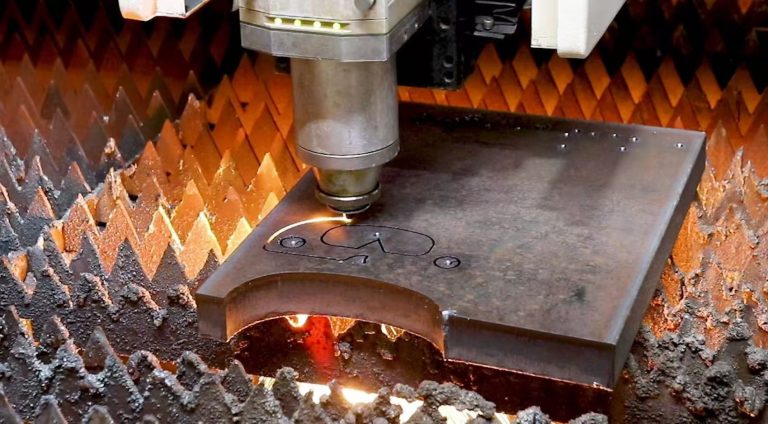Laser Cutting Defect Analysis and Solutions
For Carbon Steel – Cut with O₂
| Defect | Possible Causes | Solutions |
|---|---|---|
| No burrs, drag lines are consistent | Power is appropriate Feed rate is appropriate | — |
| Large offset in drag lines at the bottom; wider cut at the bottom | Feed rate too high Laser power too low Gas pressure too low Focal point too high | Reduce feed rate Increase laser power Increase gas pressure Lower focal point |
| Burrs similar to slag on the bottom, droplet-like and easy to remove | Feed rate too high Gas pressure too low Focal point too high | Reduce feed rate Increase gas pressure Lower focal point |
| Connected metal burrs that can be removed as a whole | Focal point too high | Lower focal point |
| Metal burrs on the bottom are difficult to remove | Feed rate too high Gas pressure too low Impure gas Focal point too high | Reduce feed rate Increase gas pressure Use purer gas Lower focal point |
| Burrs only on one side | Nozzle misalignment Nozzle defect | Align nozzle Replace nozzle |
| Material discharges from the top | Power too low Feed rate too high | Press pause immediately to prevent slag splash onto focusing lens. Increase power Reduce feed rate |
| Beveled cutting surface, two sides good/bad alternately | Full reflection mirror not suitable, improperly installed or defective Full reflection mirror installed in place of deflection mirror | Check full reflection mirror Check deflection mirror |
| Blue plasma appears, workpiece not fully cut through | Processing gas incorrect (N₂ used instead of O₂) Feed rate too high Power too low | Press pause immediately to prevent slag splash onto focusing lens. Use oxygen as processing gas Reduce feed rate Increase power |
| Rough cutting surface | Gas pressure too high Nozzle damaged Nozzle diameter too large Poor material quality | Reduce gas pressure Replace nozzle Install proper nozzle Use smooth, uniform material |
| No burrs, drag lines tilted, narrower at the bottom | Feed rate too high | Reduce feed rate |
| Crater formation | Gas pressure too high Feed rate too low Focal point too high Rust on plate surface Overheating during processing Material impurity | Reduce gas pressure Increase feed rate Lower focal point Use higher quality material |
| Very rough cutting surface | Focal point too high Gas pressure too high Feed rate too low Material overheated | Lower focal point Reduce gas pressure Increase feed rate Cool material |
For Stainless Steel – Cut with High-Pressure N₂
| Defect | Possible Causes | Solutions |
|---|---|---|
| Small, regular droplet-like burrs | – Focal point too low – Feed rate too high | – Raise focal point – Reduce feed rate |
| Long, irregular filament-like burrs on both sides, discoloration on large plates | – Feed rate too low – Focal point too high – Gas pressure too low – Material overheated | – Increase feed rate – Lower focal point – Increase gas pressure – Cool material |
| Long, irregular burrs only on one edge | – Nozzle misaligned – Focal point too high – Gas pressure too low – Speed too low | – Align nozzle – Lower focal point – Increase gas pressure – Increase speed |
| Yellowing on cut edges | – Oxygen impurities in nitrogen | – Use high-purity nitrogen |
| Plasma generated on straight sections | – Feed rate too high – Power too low – Focal point too low | – Press pause immediately to prevent slag splash onto focusing lens. – Reduce feed rate – Increase power – Raise focal point |
| Beam divergence | – Feed rate too high – Power too low – Focal point too low | – Reduce feed rate – Increase power – Raise focal point |
| Plasma generation at corners | – Angle tolerance too high – Modulation too high – Acceleration too high | – Reduce angle tolerance – Reduce modulation or acceleration |
| Beam diverges at start | – Acceleration too high – Focal point too low – Molten material not expelled | – Reduce acceleration – Raise focal point – Drill round hole first |
| Rough cut surface | – Nozzle damaged – Lens dirty | – Replace nozzle – Clean lens, replace if necessary |
| Material discharges from the top | – Power too low – Feed rate too high – Gas pressure too high | – Press pause immediately to prevent slag splash onto focusing lens. – Increase power – Reduce feed rate – Reduce gas pressure |






